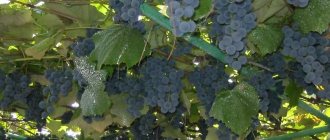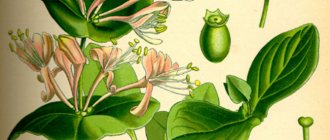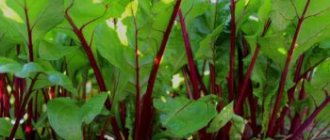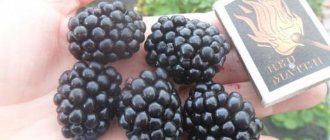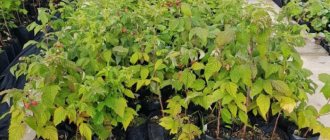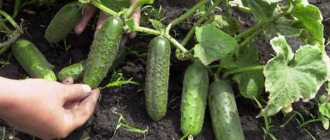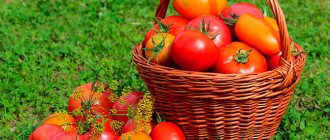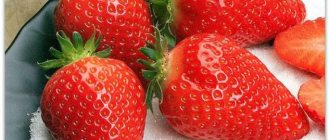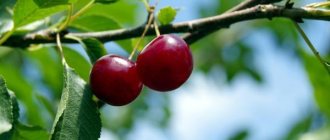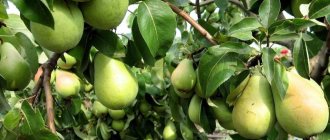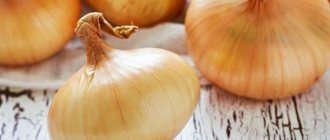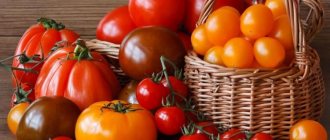| Place | Name | Characteristics in the rating |
| Top 10 best varieties of honeysuckle for the Moscow region |
| 1 | Leningrad giant | The best characteristics. Sweet taste |
| 2 | Altair | Increased resistance to diseases and temperature changes |
| 3 | Titmouse | Better yield |
| 4 | Long-fruited | High taste qualities |
| 5 | Yugana | Better transportability |
| 6 | Cinderella | Adapts well to frosty climates |
| 7 | Gerda | Disease resistant |
| 8 | Tomsk | The most popular variety |
| 9 | Milkovchanka | Juicy and tender pulp |
| 10 | Blue spindle | Easy to care for |
Healthy berries that you can grow yourself have long been popular. Gardeners enjoy caring for their plants, and during the season they delight their households and guests with delicious products. One of these is honeysuckle - an unpretentious shrub with berries that resemble grapes in appearance. They contain a huge amount of essential microelements that can cleanse the body of waste and toxins, as well as improve the functioning of many internal organs and blood vessels.
The plant is grown almost everywhere. The main thing is to choose the right variety. There are also different types of plants for the climate of the Moscow region. They are frost-resistant, so they take root well and bear fruit. Edible honeysuckle is easy to care for and has a consistent yield. In addition to their beneficial properties, shrubs will help decorate your garden. Experienced gardeners recommend planting berries and enjoying the delicious fruits.
Bakchar giant
This variety is mid-season and large-fruited. The shrubs are quite powerful - about 2 meters high and 1.3 m wide with a spreading oval and loose crown. Therefore, it is better to choose this variety of honeysuckle for planting in the Moscow region if you have a spacious area and a lot of free space.
Important! It is very convenient to harvest from this plant, since the branches are widely spaced. For pollination, it is better to use the following varieties of honeysuckle:
- Amphora;
- Azure;
- In memory of Gidzyuk;
- Nymph.
The honeysuckle bush of this variety has gray-green leaves, berries about 5 cm long and 1.8-2.5 g in weight, blue, oval, slightly elongated and asymmetrical with a sweet taste, although there is a slight sourness. There is a waxy coating on the fruits.
Such honeysuckle can be grown for fresh consumption, for preparing - freezing, preserving jam, compote, jelly, as well as for making juices and wine. Productivity ranges from 1.7 to 4.5 kg per bush - it all depends on care.
Important! Important features of this variety:
- easily tolerates frost;
- resistant to pests and diseases of fruit trees.
The best varieties of edible honeysuckle for the Moscow region
Summer residents divide honeysuckle into several categories. The sweet variety is grown for fresh consumption and processing, while the large-fruited variety is grown for sale and transportation. Self-pollinating varieties are characterized by stable fruiting, regardless of weather conditions and pollinators. What varieties of large and sweet honeysuckle do gardeners in the Moscow region choose?
Sweet
The sweet taste of honeysuckle is rare; most varieties are distinguished by sweet and sour pulp with a tart aftertaste. Some are bitter due to lack of moisture or characteristics of the variety.
My joy
The mid-late dessert variety of honeysuckle, My Joy, is universal in use. The bushes are medium oxidized, with pink matte shoots. The flowers are small, bright yellow. The berries are round-oval, blue, with a blue waxy coating. Weight is about 1 g, the stalk is short, the skin is strong but thin. The pulp is tender and juicy, sweet, not bitter. Tasting assessment of fruits - 4.6 points. About 2-3 kg of berries are collected from a bush per year. My Joy is a frost-resistant variety that is rarely damaged by insect pests.
Sweet tooth
The name of the delicious variety speaks for itself - the berries are sweet and juicy, the flesh is tender and aromatic, the taste rating is 5 points. The ripening period is average, the plant is compressed, with a rounded crown, the shoots are thick and straight. The berries are oval in shape, average weight - 0.8 g, deep blue color. The skin is thick, with a thick waxy coating; the fruits do not spoil during transportation and storage.
Heat and frost resistance are high, so Slastena is planted not only in the Moscow region, but throughout Russia. Jams, jams, jellies are made from honeysuckle, or the fruits are eaten fresh.
Large
The size of the berries depends not only on the variety, but also on fertilizers. The fruits will grow large if the crop is promptly fed with organic and mineral components - urea, ammonium nitrate, manure, compost, wood ash. Before planting, it is recommended to soak the seedlings in a growth stimulator for 1-2 days.
Bakchar anniversary
The ripening period is medium-late, the harvest is harvested in August. The purpose of the variety is universal - Bakcharskaya Jubilee is grown both for sale and for personal use. The bushes are medium-sized, the shoots are upright, the leaves are oval. The average weight of the berry is 1.4 g, the shape is oval, elongated. The color is blue-violet, there is a waxy coating. The pulp is dense and juicy, the taste is sweet and sour, with a refreshing aroma, without bitterness. Honeysuckle is not affected by diseases and bears fruit in the third year after planting.
The Giant's Daughter
The bushes are vigorous and spreading, so it is recommended to think in advance about the planting site. The shoots are straight and strong, gray-brown. The flowers are large yellow-white. The berries ripen gradually, fruiting is extended. The shape of honeysuckle is drop-shaped, elongated, weight - from 1.8 to 2.5 g. The color is violet-blue, with a waxy coating, the skin is durable. The taste is sweet and sour, with a bright aroma, the flesh is dense and elastic.
Interesting! To prevent honeysuckle from falling off after ripening, it is sprayed with a urea solution. So the fruits hang on the bush for another 5–7 days. Gardeners use one trick - they place an unfolded umbrella under the bush so that when the berries fall off, they do not fall to the ground.
The variety Giant's Daughter is not damaged by spider mites and aphids, frost resistance is down to -35°C. Suitable for processing and fresh consumption, drying and freezing.
Self-pollinating
Self-pollinating varieties are distinguished by the presence of bisexual flowers - male and female. Such honeysuckle does not require pollinating insects - wasps and bees. However, some gardeners prefer to plant several different varieties side by side for cross-pollination and increased yield.
Yugana
The ripening period is average, the harvest is harvested in mid or late July. The self-fertile variety is resistant to shedding and is not affected by rust, gray rot and powdery mildew. The bushes are medium-sized, with a dense crown, the shoots are straight and matte. The leaves are oval and rich green. The berries are pitcher-shaped, weigh about 1.2 g, the color is rich blue, with a waxy coating. The taste is sweet, with a pleasant sourness, tasting score - 4.8 points.
Thanks to its dense peel, Yugana is grown for sale and processing. Drought resistance is high; honeysuckle tolerates prolonged absence of moisture. It bears fruit 4 years after planting.
Nymph
The variety is mid-early, the first fruits are picked in the second ten days of June. The bushes are vigorous, with thick shoots. The leaves and flowers are large. The berries are spindle-shaped, elongated, average weight - 0.8 g. The surface is lumpy, heterogeneous, blue in color, with a blue tint. The pulp is pleasant and juicy, the taste is sweet, with sourness, without bitterness. Nymph's score is 4.7 points. Seedlings quickly adapt to climatic conditions, rarely get sick, and are not damaged by aphids.
Long-fruited
This is one of the first varieties developed suitable for cultivation in both temperate and harsh climates. Long-fruited honeysuckle is perfect for the Moscow region.
Description of the variety:
- Ripening dates are early, from June 5 to the beginning of the 3rd decade.
- Productivity - 1.4-3 kg per bush.
- The berries are about 2.7-3 cm long, weighing up to 2 g, blue-violet in color with a white waxy coating. The pulp is particularly tender and has a sweet and sour taste.
- Shrubs are spreading, with dark green small or medium rounded leaves, thin and long branches.
Titmouse
One of the most popular varieties of honeysuckle, photos and descriptions of which can be easily found on many thematic forums. Its shrubs are large - up to 2 meters in height with a rounded crown. The fruits are particularly juicy and do not have even the slightest hint of bitterness, only a pleasant sweet and sour taste. The skin of the berries is thin, the size can reach 3 cm.
Important! After 3 years of growth, bark detachment is possible - this is normal. The Amphora variety is most often used for pollination.
Chosen One
Let's look at the description and photo of this honeysuckle variety, which is also great for growing in the Moscow region:
- The shrubs are low, with a dense and squat crown, so they are quite acceptable for compact areas.
- This is one of the sweet varieties of honeysuckle with large and juicy berries up to 2 cm in size. The fruits are oval and slightly pointed at the top, blue in color, with a thin peel.
- The average yield is about 3 kg per plant.
Important! This variety is characterized by pairwise fusion of fruits, and their shedding is low.
Altair
A rather compact shrub variety of edible honeysuckle with erect branches and dense foliage. Ripening time is the second or last ten days of June, the harvest is about 3 kg.
The fruits are up to 2 cm long, weigh about 1.5 g, are dark blue, and have a dense purine coating. The berries are generally sweet, but there is a slight hint of tartness.
Important! Characteristic advantages:
- Good frost resistance.
- It practically does not get sick and is not susceptible to pest attacks.
- Few berries fall.
The best pollinators are the Blue Spindle and Morena honeysuckle varieties.
Violet
Small shrubs are also typical for this variety of honeysuckle, which is considered one of the best for the Moscow region. It blooms twice a year - in autumn and spring, so it fits perfectly into the landscape design and increases its decorative value.
The yield of this variety leaves much to be desired - no more than 2 kg per bush, the berries themselves weigh no more than 1.5 g, are moderately aromatic, practically without bitterness, with a sweet and sour taste. Ripening date is June 20th.
Important! For pollination, the following varieties are planted nearby:
- Blue spindle;
- Nymph;
- Moraine;
- Amphora.
↑ Selecting honeysuckle according to bush height
Honeysuckle is chosen depending on one’s own goals: when you need to plant a fruit-bearing bush on a plot, you buy tall varieties, and if not, then short plants.
In the photo is honeysuckle Karina:
↑ Short
If the height of the bush is no more than 1.5 m, it is a low-growing plant. Varieties include:
- Gerda: bears fruit in the second year, blue-black berries are oval, with extended ripening. Productivity up to 2.4 kg.
- Late Gzhel: large, sweet and sour, without bitterness, pear-shaped berries. The yield per bush is up to 2 kg.
Low-growing honeysuckle includes: Lyulia, Violet, Amphora, Altair, Ramenskaya, Julia, Kamchadalka.
In the photo there is honeysuckle Altair:
↑ Medium-sized
Shrubs in this category grow from 1.5 to 2 meters. The categories include:
- Amazon: a plant with a small crown, the fruits are harvested in the first half of June. Dark blue berries with a lumpy surface, without bitterness, with sweet and sour pulp. Productivity up to 1.5 kilograms.
- Tomichka: the height of the plant with a spreading crown is up to 180 cm. The dark purple fruits are covered with a coating, the flesh is sour-sweet, without bitterness. The plant begins to bear fruit 4 years after planting. Ripe berries are harvested from mid-June, the yield is up to 2.4 kilograms per bush.
The following medium-sized varieties of honeysuckle are also popular among summer residents: Korchaga, Princess Diana, My Joy, Kucha Mala, Bakcharsky Giant, Early Gzhel, Kingfisher.
↑ Tall
Tall honeysuckle shrubs include plants reaching a height of two meters or more. These varieties include: Volkhova, Viliga, Blue Spindle, Nymph, Moskovskaya-23.
In the photo the variety Moskovskaya-23:
Breeders continue to work on creating more and more new varieties of honeysuckle, breeding varieties that produce high yields in different regions of Russia.
We recommend studying: proper care of Goji berries on your property
Cinderella
Early ripening edible honeysuckle with low bushes up to 0.7 m, dense, not very spreading crown. Productivity is excellent, with proper care up to 5 kg per plant of 2-3 years of age, in bad weather - up to 2 kg. The berries are medium in size, about 1.5 g in weight and up to 1.7 cm in length. The harvest ripens at the end of June.
The name of this species is quite justified. What is interesting about this variety of edible honeysuckle for growing in the Moscow region is the taste of the berries - they are sweet, with a strawberry aroma, and have absolutely no bitterness or astringency. According to tasting tests, this type is awarded the highest scores.
Important! Pests and diseases are not scary for this species, the degree of shedding is low.
For pollination, you will need to plant one of these varieties nearby:
- Gerda;
- Azure;
- Amphora;
- Leningrad giant.
How to care
The first years after planting are the most critical period for caring for honeysuckle. While the young plant is gaining strength and preparing to bear fruit, maximum attention is paid to it. The size of the harvest directly depends on this.
Watering and fertilizing
Despite the resistance of honeysuckle to drought, the bush needs a sufficient amount of moisture for active growth. On hot summer days, the young plant is watered daily, except in rainy weather. A bush consumes 10 liters of water, in especially dry and hot periods - 20 liters.
Lack of moisture negatively affects the taste of honeysuckle berries: they begin to become very bitter!
Fertilizing at the root of a young plant is applied twice a year:
- in the spring, before the buds swell, ammonium nitrate (15 g per 1 sq. m);
- in autumn - 40 g of superphosphate and 100 g of wood ash per 5 kg of compost.
If the bush is lagging behind in growth, carry out extraordinary fertilizing with mullein infusion. Half a bucket of fresh manure is filled with water and left for 7–10 days. Before use, dilute a liter of infusion in a bucket of water and spend 5 liters per plant.
Tillage and pruning
To ensure air access to the roots, the soil under the bush is loosened regularly, but with the utmost care. In the spring, after the snow melts, the bushes are hilled up and the soil surface is mulched generously.
In the fifth year after planting, formative pruning begins. The procedure is performed in early spring, before bud development. Remove old, withered shoots, as well as branches with signs of disease. If the bush is too dense, cut out the shoots coming straight from the soil.
During spring formative pruning, you cannot shorten the shoots of the previous year, since it is on them that the most berries are formed.
Preparing for winter
In the Moscow region, honeysuckle winters well without shelter, but if very severe frosts are expected, you can cover the tree trunk with spruce branches or cover it with straw. The main measures to prepare for cold weather are water-replenishing watering if the weather is dry, and digging up the soil under the bush.
Milkovchanka
This species was bred in Kamchatka and is still used to breed new varieties.
Description of honeysuckle variety Milkovchanka:
- The shrubs are squat, no more than 1.2 m in height.
- Productivity is small, maximum 1.5 kg.
- The berries of this honeysuckle variety are very sweet - 8.1% sugar. Taste qualities are rated 5 points by tasters.
Important! During the entire period of cultivation, absolutely no shortcomings were identified in this species.
Based on the whole complex of features, low productivity cannot be attributed to them either, since it is determined by the size of the bushes.
Useful video:
Rich in vitamins and minerals, the berry is one of the very first to appear in our gardens. When currants and raspberries are still far away, and strawberries are just gaining strength, honeysuckle is already giving us its fruits with might and main. Each small berry of this incredible plant contains a huge amount of vitamin C and potassium; it can replace a whole lemon and bring no less benefits than lingonberries or cranberries. Its incredible taste will be appreciated by both adults and children; the pleasant tart taste will appeal to even the most sophisticated gourmet.
Leningrad giant
These are slightly spreading plants, about 2 meters tall, which produce a yield of 3 to 5 kg. The berries are large, about 3-4 g in weight and up to 3.5 cm in length, growing in clusters. The taste of the fruit is sour, without bitterness.
Important! The following varieties are suitable for pollination:
- Moraine;
- Gzhelka;
- Blue spindle.
This species is resistant to diseases and pests.
Features of planting and care in the Moscow region
For planting in the Moscow region, unpretentious and productive varieties are chosen. It is advisable to plant several different bushes nearby, because most varieties are self-fertile and require cross-pollination. The area is cleared of debris and weeds and dug up using a shovel handle. Prepare a hole 50 cm deep and add manure, compost, humus and nitrophoska into it. If the soil is acidic, lime it.
Attention! It is recommended to plant seedlings with an open root system in summer or late autumn. If the plant is sold in a pot, any warm season is suitable for planting, except for the flowering period. The suitable age of seedlings is 2 or 3 years. Older plants often get sick.
In the first 15 days after planting, the soil around the seedling should be slightly moist. Do not flood the plant with water - there is a high risk of developing fungal diseases. Adult plants are watered once every 3-4 weeks, before moistening the soil is loosened and weeds are removed, and the sprinkling method is used. Large-fruited varieties need additional nutrition. Fertilizing strengthens the plant's immunity and stimulates fruit growth. Once a month, the bushes are sprayed with a solution of Bordeaux mixture - foliar fertilizers protect against diseases and pests.
Nymph
A mid-season variety of garden honeysuckle, the ripening period of which extends from the beginning of June to the end of July. The plants themselves are not very tall - about 1.5, the crown is convenient for harvesting, as it is slightly thickened and compact.
The berries grow weighing from 1.5 to 3 g, 3 cm long, 0.9 cm in diameter. The color of the fruit is dark blue, there is a characteristic bluish waxy coating. The taste is sweet and sour, there is a distant bitterness and a slight tartness.
Important! According to the description and reviews of gardeners, this variety of edible honeysuckle bears fruit for up to 25-30 years. The plants also withstand harsh climatic conditions and pest attacks well. Species such as Pushkinskaya, Omega, Izanninitsa, Amphora are suitable for pollination.
Growing problems and their solutions
Honeysuckle is resistant to diseases and pests, but if the rules of caring for the plant are not followed, some problems are possible:
- Powdery mildew. The disease affects bushes that are too dense in damp, cold weather. For prevention, plants are treated with the drugs “Prognoz”, “Topaz”, “Fundazol”.
- Ramulariasis, or white spotting. A fungal disease whose spores form drying spots on the leaves. With a large infection, the number of berries is reduced by half. All parts of the plant with signs of infection are cut off and burned. The bush is treated with Bordeaux mixture or any fungicidal preparation.
- Cercospora blight. Bushes that are too dense are susceptible to the disease. Light brown spots with a red border with a diameter of 3–4 mm appear on the leaves. Favorable conditions for the development of fungus are an air temperature of 25 degrees Celsius combined with high humidity. Preventive spraying with fungicides in early spring helps fight the disease.
- The plant does not bear fruit well. The reason for low yields is insufficient pollination of flowers. If 2–3 bushes of one or two varieties are planted on a plot, you should not expect a large number of berries. For good fruit set, it is necessary to plant at least three varieties that will pollinate each other. In order for the bushes to attract pollinating insects, they should not be placed in a row, but in a large clump.
- There are no signs of disease, but the bush withers and gradually dries up. The cause may be improper watering and damage to the roots during loosening. It is better to water honeysuckle rarely, but abundantly, then the water will be evenly absorbed by the roots. Instead of frequent loosening, it is better to mulch the soil with a high layer, then after watering a crust will not form on the surface.
Weak from a lack of nutrients and improper care, honeysuckle bushes are often attacked by insect pests:
- honeysuckle aphid;
- leaf roller;
- fingerwing;
- scale insect;
- moth.
You can spray the bushes with insecticidal preparations to kill insects only after harvesting. During flowering and fruit formation, pests are collected by hand or the bush is sprayed with an infusion of tobacco dust.
Moraine
Spreading, about 1.6 m plants with a loose crown, beautiful plants of edible honeysuckle Morena are excellent not only for growing in the Moscow region as a fruit crop, but also as an ornamental shrub for decorating an area.
Productivity is average, maximum 2-2.5 kg, but the berries themselves are quite large, about 3.5 g in weight and 3 cm in length, have a translucent dark blue peel, and a dense purine layer. The aroma is not very pronounced, but the taste is balanced, without bitterness. This variety of edible honeysuckle can be harvested in mid-June when grown in the Moscow region.
Important! Frosts, diseases, pests, long transportation - all these factors are not harmful to either plants or fruits.
Vasyuganskaya
The Vasyuganskaya honeysuckle variety, named after the Siberian Vasyugan River, is distinguished by its Siberian health and excellent ability to easily tolerate low temperatures in winter and frosts in spring. It will also withstand the Epiphany frosts of the Moscow region.
The bushes of this variety are medium in height - 1.2-1.5 meters, the crown with a diameter of 1.2 meters. The berries are also not surprising in size, their weight is 0.7-0.8 grams, length 2-2.5 cm.
The fruits are blue, the waxy coating is bluish. Ripe berries do not fall off for a long time, and are stored for a long time after picking. They are collected from June 10 to June 20.
The Vasyugan variety resists diseases and harmful insects well, easily tolerates temperature changes and summer heat with drought, but at the same time, is responsive to watering and careful care. Pollinators for him are Yugana and the Giant's Daughter.
Vasyuganskaya
Yugana
A low-growing, late variety of honeysuckle, the bushes of which have a round and spreading crown. Berries should be expected to ripen at the very end of June, sometimes even from the beginning of July until the end of summer, if the weather remains cold.
The fruits weigh 1.5-1.8 g, are dark purple, rich in color, sometimes even almost black. This variety of honeysuckle is classified as sweet - sourness, if present, is only slightly noticeable, and astringency is completely absent.
Important! It is very profitable to grow the Yugan species if the main goal is freezing the berries. When defrosted, they practically do not lose their sugar content.
The yield of this variety is amazing - on average about 6-7 kg per bush. The plant rarely gets sick; parasites practically do not attack it.
Important! For pollination, it is advisable to plant the Bakcharsky Giant or Delight variety near it.
Blue bird
This variety is characterized by low - up to 1.5 m, but spreading shrubs with a dense crown. A harvest of 2.5 kg can be expected only in the 6-7th year of plant growth. The ripening period for garden honeysuckle Bluebird when grown in the Moscow region is greatly extended - mid-June and for another month.
The sugar content of the fruits of this variety is very high, so the sourness is practically not felt. There is a blueberry aroma and a slight tartness. The weight of the berries is on average 1 g.
Important! For pollination, varieties such as Nymph and Cinderella are taken.
Classification of varieties
It is quite natural that this culture attracted the attention of domestic breeders. Currently it has more than a hundred varieties. All of them are conventionally divided by region of origin. These are groups of Ural, Siberian, Far Eastern (coastal), Leningrad, and Moscow varieties.
Ural selection
In the Urals, selection work on honeysuckle is carried out in Chelyabinsk by the Yuzhnouralsk Research Institute of Horticulture, as well as by the experienced seed-growing enterprise "Bakcharskoe" in Tomsk and the State Research Institute of Horticulture of Siberia in Barnaul. Examples of South Ural varieties: Lenita , Long-fruited , Fire Opal , Volshebnitsa , Bazhovskaya , Fianit , Sineglazka , Izyuminka , Lazurit . Zoned for the Urals: Honeysuckle Turchaninova , Chulymskaya , Gerda , Parabelskaya .
All of them were created on the basis of the best Altai and Kamchatka varieties and inherited, respectively, high productivity from the former, and a sweetish taste with a slight bitterness from the latter. They were bred taking into account the snowy winters of the Urals, and the bushes were limited to a height of no more than 1.5 m, the yield was usually average.
Primorskaya selection
In the Far East, honeysuckle selection is carried out mainly at the state experimental station VNIIR in Vladivostok. Examples of the varieties they bred: Zagogulinka , Golubinka , Non-falling , Dolphin , Tatyana , Kapel , Forget-me-not , Rassvet . Primorye differs from central Russia in its even climate, longer, but very humid, cool summers. Honeysuckle is the earliest berry in these parts. However, in the conditions of the sharply continental hot summer of the middle zone, coastal varieties very often bloom again, as a result of which the yield for the next year sharply drops.
Honeysuckle of seaside selection is characterized by a bush of medium height - up to 2 m, and is capable of creating dense thickets, which is successfully used for landscaping. Its berries are quite large, weighing up to 1.5 grams. The champion in size is the Zagogulinka with a fruit length of up to 5 cm and a weight of up to 2.7 g. The taste is dominated by sweet and sour ones, but there are also unusual varieties. For example, Tatyana has a pronounced strawberry flavor, and Non-falling is very sweet.
Siberian selection
Quite a few small private farms are engaged in the selection of honeysuckle in Siberia, but the “trend setters” for them are, again, the Horticulture Research Institute in Barnaul and the Bakcharskoye seed production enterprise in Tomsk. Of course, Siberian varieties must be very frost-resistant, so the basis for them was the local, Kamchatka and Altai varieties. Examples of varieties of the Kamchatka line: Gerda , Kamchadalka , Zolushka . Primorskaya line: Bakcharskaya , Narymskaya .
Kamchadalka bush
Varieties of Siberian selection, especially from the Bakcharskoye enterprise, are famous for their high content of vitamin P, excellent taste and winter hardiness. With a fairly high yield, they are well suited for various jams, jams and juices. The varieties are especially famous in central Russia: Bakcharskaya Yubileinyaya , Roxana , Pride of Bakchar , Bakcharsky Velikan , Silginka .
Leningrad selection
The main varieties for this region were developed at the research center of the Institute of Plant Genetic Resources in St. Petersburg. The basis for them was the Kamchatka species of honeysuckle, hence the good sweet taste with weak crumbling. The height of the bushes does not exceed one and a half meters. The following varieties of this research center are known: Amphora , Malvina , Morena , Blue Spindle , but they differ in the best taste: Nymph , Volkhova , Violet , Souvenir , Altair , Omega , Nightingale .
In the central region, Leningrad varieties bear excellent fruit, but with ripening they lag behind the local ones by about a week. The height of the bushes of this selection is quite small - no more than one and a half meters, which is why they are often used for landscaping and as hedges.
Moscow selection
This direction of selection is based on the zoning of varieties from all regions of the country. The main botanical garden of the Russian Academy of Sciences in Moscow sets the tone here. The main work was carried out in the direction of improving the gastronomic qualities of the fruits, so they are distinguished by an abundance of vitamins and excellent dessert taste.
Of all this Moscow region diversity, the earliest are: Skoroplodnaya , Champion , Fortuna , Sladkoezhka , Gzhelskaya Early , Roxana . From mid-season and late, ripening by the end of June: Moskovskaya 23 , Lakomka , Kingfisher , Gzhel late , Ramenskaya , Violet , Sinichka . Among them, one can distinguish varieties with very large fruits that have absolutely no bitterness: Skoroplodnaya , Gzhelskaya Rannyaya , Soska , Kuminovka .
Kamchadalka
This variety of edible honeysuckle is suitable not only for growing in the Moscow region, but even in the harsh conditions of Siberia. The ripening period is early, the bushes themselves are small - about 1.5 meters high.
Productivity is average; after 7 years of bush growth, you can harvest up to 2.5 kg. The berries themselves are large - often up to 3 g, very sweet, have a bright aroma, no bitterness or astringency.
Important! Shrubs of this variety can withstand frosts even down to -50C, are undemanding to conditions, even tolerate drought well, and rarely get sick.
Use the varieties Zolushka, Tomichka, and Amphora as pollinators.
Siberian
An early-ripening, frost-resistant, self-sterile variety, obtained by employees of the Bakcharsky stronghold (Tomsk region) in 1972 as a result of crossing Kamchatka honeysuckle and Turchaninov honeysuckle. The variety was included in the State Register in 2000. Admission – all regions.
Medium spreading bushes reach a height of about 160 cm. The crown shape is hemispherical. The skeletal branches are of medium thickness.
The dark purple fruits are large, sweet, and aromatic. The waxy coating on the surface is weak. The weight of the spindle-shaped, slightly curved berries ranges from 1.1 to 1.4 g, length - from 2 to 2.5 cm. The pulp is tender and juicy. The taste is excellent. Tasting score – 4.9 points. Chemical composition: sugars (8.2%), acids (1.9%), vitamin C (32 mg per 100 g).
The purpose is universal. Transportability is average.
Tomsk
A low-growing variety with a beautiful decorative crown and spreading curved branches. A stable harvest has been observed since the 4th year of cultivation in a volume of 2.5 kg.
The ripening period is quite extended, the first berries can be picked from June 10 and for another 1-1.5 months. The size of the fruit is not very large - the average weight is 1 g. The color of the berries is dark blue, there is a bluish coating.
This is a sweet variety of edible honeysuckle, from the description of which one can distinguish a complete absence of bitterness and astringency, a barely noticeable slight sourness. The fruits of this species contain a very high percentage of vitamin C content - about 25% by weight. Diseases and pests are rarely observed.
Blue spindle
Another variety of edible honeysuckle, which is suitable not only for the Moscow region, but also for any other region with a harsh climate, including Siberia. The bushes themselves are very low - only 1 meter, and have a compact and sparse crown.
The berries are very large, from 3 cm long. Their weight is 1.5-2 g. The fruits are almost black with a tint of blue. In terms of taste, they are sweet, with very distant sourness and absolutely no astringency. Productivity - 2-2.5 kg per plant. Ripening time is mid-June.
Important! The best pollinators are the Blue Bird and Cinderella varieties. It is necessary to monitor the timing of harvesting - if there is a delay of up to 20% of the berries, they may fall off. This crop is not afraid of severe frosts and pests.
As you can see, there are more than enough varieties of edible honeysuckle to grow in the Moscow region. Set your priorities based on the size of the plot, the use of berries, and do not forget that it is advisable to grow these fruit bushes in combination - 3-4 different varieties side by side for good pollination.
Decorative honeysuckle for the Moscow region
Decorative honeysuckle is elegant and elegant, not inferior in beauty to exotic plants. Shrubs are planted along the fence or in the corners of the garden, in personal plots. Often, decorative honeysuckle acts as a hedge, effectively decorating any place. Some of the most popular decorative types are honeysuckle and oriental.
- Honeysuckle reaches a height of 3 m, flowering begins in June. The flowers are creamy pink, placed one above the other. In August, pink-red berries ripen on the bushes and grow in pairs. The culture is unpretentious in cultivation and requires a minimum of care and time. The species is frost-resistant, suitable for decorating garden arches and verandas.
- Eastern or Caucasian honeysuckle reaches a height of 1.5–2.5 m; small bushes fit perfectly into compact garden plots. The flowers are pink-violet and grow on long, thin green stalks. Flowering begins in May and continues until June. In August, large blue-black fruits ripen.
